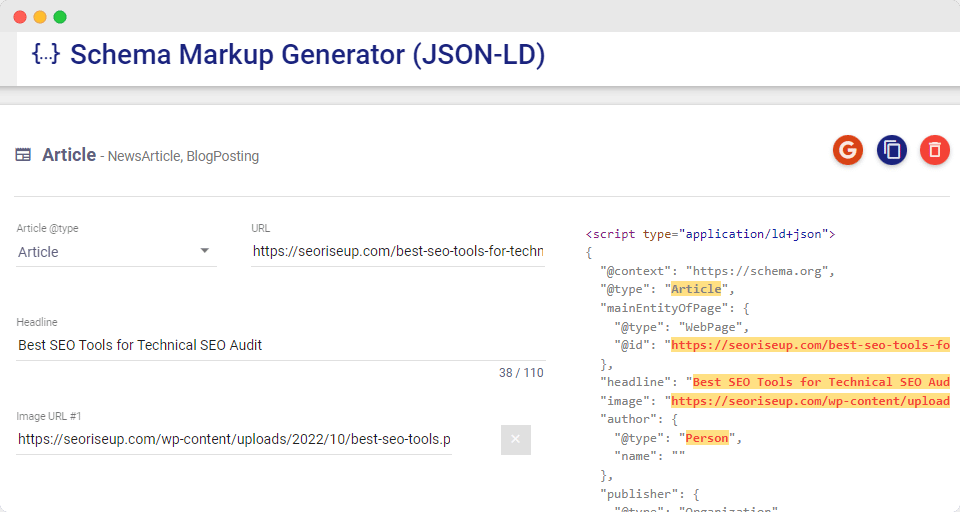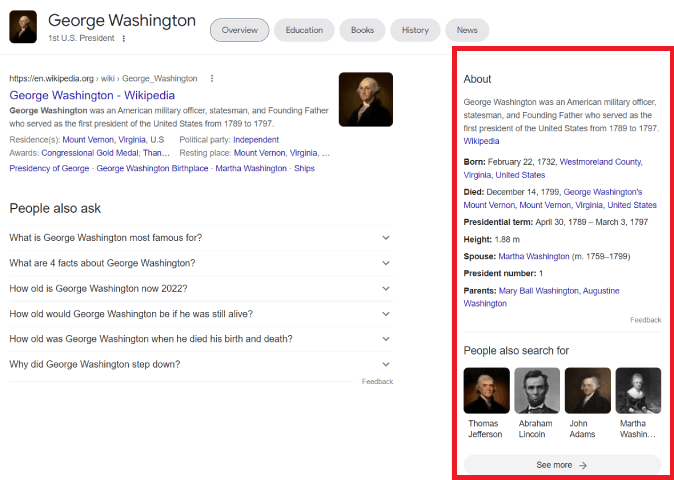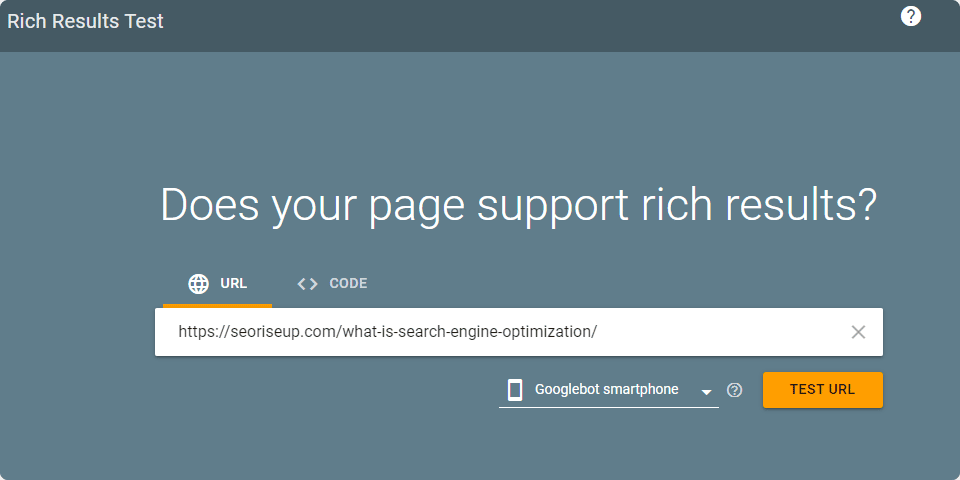What is Structured Data & Schema Markup for SEO?
It is very important to describe your site and make it easy for search engines to understand it. The easier a crawler bot can crawl your website the better the chances you will rank higher. This is why you need a vocabulary that presents content with a structure best suited for crawlers.
What is Structured Data?
Structured data is a type of a markup that helps search engines like Google to display and interpret content. It is an organized information. It implements types of markup on webpages. This is how it provides additional detail around page content. Structured data in SEO context is a particular vocabulary known as schema.org. It is a common approach that is used for structured data markup for SEO processes. It improves the search engine’s understanding of content that enables the site to benefit from results in SERPs.
Schema Markup for SEO
Schema markup is a structured data vocabulary that tells search engines what’s on your webpage. It also helps to understand the information in order to rank it better. With the help of this markup, search engines can more easily recognize your various content forms on your website. This is because schema markup is used to indicate organizations, people, events and other products.
When you add these markups to your site, search engines will be able to showcase the information.
There is also FAQ structured data, a code that you implement to your site’s FAQs in order to increase your visibility on nsearch results and so that it can rank as a SERP rich results. The importance of using FAQ format is that it can result in tripling or doubling space occupied by your search result listings. It makes the search more visible and overshadows the competitor.

Schema Markup Generator
Schema markup generator is a tool that allows to enter information about product, person or organization in order to build a chunk of JSON-LD code. Then you can paste it into your website’s HTML. It is used by website owners. You can implement structured data without the help of developers. In order to use this generator, select the schema mark that you want to generate and fill out details like email, address in the generator form to build JSON-LD code.

Rich Snippets and Rich Cards
Rich snippets are normal Google search results with additional data displayed. It is pulled from structured data found in a page’s HTML. There are common rich snippets such as events, reviews and recipes. First you have to choose the snippet type. This is how you will be able to use structured markup in order to get that rich snippet in the SERPs. You can get rich results by adding structured data to the site. It is a written code that helps search engines to understand your webpage content.
Same as rich snippets, rich cards describe a way of displaying content in Google search but this time on a mobile phone. These are the evolutions of rich snippets. It also uses schema markup that improves mobile user experience. You can implement rich cards JSON-LD format. It is a semantic schema markup that provides visual impression on a mobile.
Differences Between Rich Snippets and Rich Cards
The main difference between these two results is rich snippets doesn’t involve a change in the SERPs. Google just enhances the search result to provide information. However, rich cards require separation. After you implement rich cards, the consequence is a separate search result, mainly in mobile SERPs.

What is JSON-LD and How it works?
JSON-LD is a lightweight Linked Data format that reads and writes structured data. It uses vocabulary such as schema.org. The main purpose is to provide a contextual information about webpages. It is added to the head of the webpage. It uses semantic web technologies. That is why it is preferred by search engines and considered as the best practice. It is used by UX designers to feed widgets with data. Developers can use this data structures to feed search engine crawlers with metadata that describes the content of webpage. These are the best parts of JSON-LD compared to other formats:
- You can load it asynchronously, so it will not affect the performance of a webpage.
- It has no impact on existing HTML and tags.
- Since it follows JSON syntax, it is easy to reuse it as a developer.
- It has a leverage process on linked data.
Google encourages the website owners to use this form of JSON-LD. It improves website’s click rate and user signals that ensures improving site’s SEO performance. It is supported by Google’s structured data markup tool. The final can be tested by Rich Results Test.

Google’s Knowledge Graph
It is a knowledge base of entities and the relationships between them. It influences the search in many ways. This knowledge base very beneficial for users and SEOs. Because SEOs can get more traffic and users can have more search results. These are how knowledge graph influences SEO for better and worse:
- Google will understand the search intent much better. It allows Google to go beyond keyword matching and provide more results.
- Google can accommodate voice searches perfectly. Since voice queries are very important for Google, knowledge graph allows it to recognize attributed and entities in natural language queries.
- It provides more authority and brand visibility. Knowledge graph helps to benefit more from SERP visibility, real estate and trust among searchers.
- There are less clicks. This is a problem for SEO. So owners will have no organic traffic.
How to get in Knowledge Graph?
There are few things you can do to have more chances:
- Step up your link building game and PR.
- Use schema markup.
- Sign up for Google my business.
- Build wikipedia.org. Entry
- Get a Wikipedia.
- Always be consistent.
What is Unstructured Data?
Unstructured data is a kind of an information that is not arranged according to a schema and not stored in a traditional database. There are two common types of unstructured data: multimedia and text. This type of a data stores wealth of information that guides business decisions. These are not organized data types. Presentations, videos, text, files and PDFs are all unstructured data types. These are 8 common examples of unstructured data:
- Medical Records
- Social Media
- Business Documents
- Audio, images and video content
- Communications
- Survey responses
- Publications and listings
- Webpages

Structured Data Testing Tools
There are structured data testing tools that are used by programmers to code structured data. The code is inserted on the back end of the page. You can use tools to check any errors. It is important for checking the validity of structured data to make the webpage more meaningful. On the other hand there is a rich results testing tool. It focuses on structured data types to show them as rich results. It allows to test all data sources such as Microdata and JSON-LD. In order to test, open testing tool, enter the URL and review the output.
How to Implement Structured Data
Here is how to implement structured data:
- Open Google’s Structured data Markup Helper.
- Enter the URL by selecting the data type.
- Assign data tags and highlight page elements.
- Build HTML.
- Add schema markup.
- Test the markup by structured data testing tools.
Frequently Asked Questions
What is the difference between structured data and unstructured data?
Structured data is a quantitive data that consists of numbers and stored in tabular formats like excel. On the other hand, unstructured data is a qualitative data that consists of video, audio and sensors and stored in those data bases.
What is Google’s most used structured data format?
JSON-LD is the most preferred data format for structured data. It is important to make sure all structured data used with the help of JSON-LD.
Conclusion
In this article, we explained the structured data and schema markup for SEO. It is very important to describe your site and make it easy to understand for search engines like Google. In this case, it can show the rich results. With the help of this schema markup, search engines can see the meaning behind entities mentioned on your website. Whether it is structured data or unstructured data, there are steps to implement them for SEO and check the results by checking tools.


